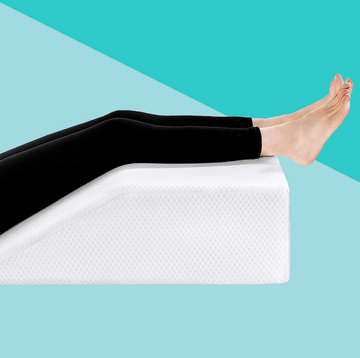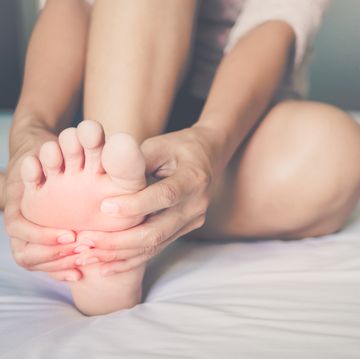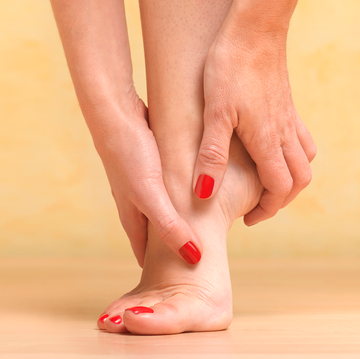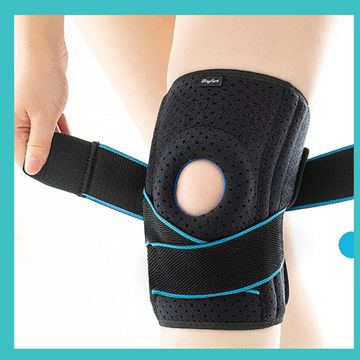An estimated 43 million Americans live with chronic pain. Yet experts agree it's woefully undertreated in our country. Despite breakthroughs in the understanding of pain, few doctors are aware of the latest advances or are trained in pain management, says Michel Dubois, MD, a New York–based pain specialist.
Two major shifts in thinking are that chronic pain is now believed to be a disease, not a symptom, and that treating pain is not simply about targeting the source but treating the whole person. Like for heart disease or other chronic conditions, there's no magic bullet, so you need to draw on a number of approaches, from exercise and medication to relaxation techniques and talk therapy. (Check out 8 weird—and natural—ways to beat pain to get you started.)
Eliminating your pain entirely may not be realistic. What is attainable: lowering your pain enough to improve your life and let you do the things you love. If you're making any of the mistakes that follow, we've got a formula for lasting relief. (Want to pick up some healthier habits? Sign up to get daily healthy living tips delivered straight to your inbox!)
1. You're trying to tough it out.
One in four pain sufferers waits at least 6 months before seeing a doctor. Many wait a year or longer. Typical reasons: They downplay the pain or think it'll pass on its own, according to the American Pain Society. Also, many sufferers self-treat with OTC painkillers. (If you're injured, you can still be active with these tips for exercising while you're in pain.)
Get relief: Seek treatment sooner rather than later. Studies show the majority of injuries resolve themselves in about 4 weeks. If yours hasn't—or if your pain is affecting your ability to function—see your doctor. Waiting can wreak havoc on your body and your mind. When pain keeps you from being active, muscles weaken and shrink and joints stiffen, setting you up for further injuries. Research shows that chronic pain can also lead to depression. More research suggests pain may become less responsive to treatment over time.
2. You're afraid to exercise.
It may be the last thing you feel like doing when you're hurting, but study after study shows that exercise reduces all kinds of pain. It strengthens your muscles and lubricates your joints, making you less likely to get reinjured or suffer joint pain. It also releases natural pain-relieving endorphins, which can boost your mood, and it fights the inflammation associated with a number of painful conditions like gout and rheumatoid arthritis.
Get relief: Start slow and easy, especially if you've been sedentary for a few months. Do 5 or 10 minutes of walking or another low-impact activity a couple of times a day. Swimming or aquatic aerobics, especially in warm water, makes it easier to move, takes pressure off joints, and reduces stiffness and pain. "The goal is to get you to a comfortable level of functioning," says Judith Turner, PhD, a professor of psychiatry and behavioral sciences at the University of Washington. For people who have fibromyalgia, low- or moderate-intensity activities reduce pain better than high-intensity ones. (See our 5 best workouts for chronic pain for inspiration.)
MORE: Your 10 Biggest Walking Pains, Solved
3. Your first instinct is surgery.
Surgery may feel like the most efficient option, but for chronic pain, the research is mixed. Studies show that operating to relieve lower-back pain without any evidence of nerve pressure, for example, may offer minimal, if any, benefit, compared with a rehabilitation program. "The truth is any surgery has a chance of making your pain worse from infection, scarring, and nerve damage," says Tim Carey, MD, a professor of medicine at the University of North Carolina.
Get relief: Opt for pain medications, physical therapy, or exercise first. To treat back pain, for example, experts recommend trying a combination of the three for at least 6 months before discussing surgical options. Many people will improve enough to either avoid or no longer be eligible for surgery.
MORE: 11 Highly Effective Solutions For Sciatic Nerve Pain
4. You haven't tried natural remedies.
If you can't take pain meds because of side effects—or you’re just looking to enhance their effects—consider alternative treatments. Clinical studies show acupuncture, for example, relieves osteoarthritis pain, sciatica, and lower-back problems. Rheumatoid arthritis sufferers can benefit from the anti-inflammatory effects of omega-3 fatty acid supplements. Also, according to a large review of recent research, patients who took devil's claw, white willow bark, and cayenne for lower-back pain had more relief than those who took a placebo.
Get relief: From yoga to ginger, there are many ways to fight pain naturally. Just be aware: Herbal therapies are not without side effects, and they may interfere with other medications, so talk with your doctor before taking them. Start with some simple relaxation techniques: Practice deep breathing and tightening and relaxing different muscles for 15 to 20 minutes every day. A therapist can help you learn other relaxation methods, such as visualization, self-hypnosis, and biofeedback.
MORE: 60-Second Fix For A Stiff Neck
5. You don't discuss depression.
About 54% of people with chronic back pain suffer from depression. But only one-third of them take antidepressants, according to a recent study. New brain-imaging research, however, clearly shows that our mental state is intricately tied to how we process and experience pain. Brain scans show that in patients with chronic pain, the parts that light up are involved with emotion, not just sensation. "It implies that our emotions have a profound influence on how we perceive pain, how much distress it causes, and ultimately how it affects our quality of life," says Russell Portenoy, MD, a professor of medicine and pain management at Albert Einstein College of Medicine in New York.
Get relief: If you feel hopeless, sleep more or less than usual, or gain or lose weight rapidly, you could be suffering from depression. Discuss your symptoms and options with your doctor, who may prescribe an antidepressant, recommend cognitive behavioral therapy (CBT), or even suggest a combination of the two. CBT teaches you how to better cope with and adapt to your pain (and even train your mind to reduce it), which helps lessen the emotional stress that can make the pain feel worse. "There is more science showing the benefit of cognitive behavioral approaches than there is for most of the drugs for pain," Portenoy says.
6. You don't do your research.
A little digging on your own behalf may open you up to new treatment options, help you ask more pointed questions, and improve your sense of control over your care. Antonia Kent, 39, injured her back when she was 21 and underwent three failed surgeries before deciding it was time to look into different options herself. "I went to the library and read about my particular injury and pain treatments," says the teacher from Union, NJ. "It made me feel proactive and not a victim of my pain." The research gave her ideas about which doctors to talk to and therapies to try. After her third surgery, she started taking a stronger medication that got her back on her feet. Today she takes a milder medication with herbal supplements, and her pain is much better controlled.
Get relief: Research your specific condition on patient advocacy Web sites, such as the American Pain Foundation site. Also consider joining local chronic pain support groups, where you can get doctor recommendations and share ideas about treatments. You can find tools online to help you decide whether to have surgery, take a particular test, or continue with treatment. One good online resource is the Dartmouth-Hitchcock Medical Center’s Center for Shared Decision Making. You can download questionnaires or borrow videos to help you weigh risks and benefits.

















